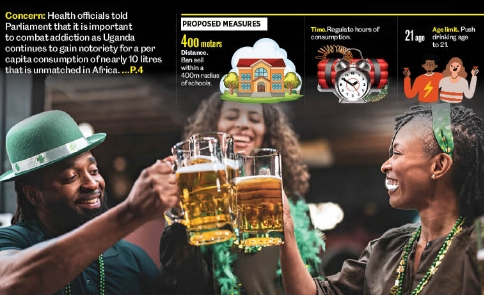Govt won’t repair Ssezibwa Bridge, to build new one

The damaged section of the Ssezibwa Bridge. PHOTO | FRED MUZAALE
What you need to know:
- Currently, the bridge is limited to one lane with Unra placing warning notices to drivers in Bukolooto, Kalagi and Kabimbiri trading centres to use alternative routes as guided by the agency.
All trucks carrying goods might soon be barred from using the damaged section of Ssezibwa Bridge after Uganda National Roads Authority (Unra) disclosed that there are no immediate plans to have it renovated.
Although timely renovations would allow the now blocked heavy vehicles from accessing the bridge, Mr Allan Ssempebwa, the Unra spokesperson, told Daily Monitor in an interview yesterday that they would instead construct a new permanent bridge to replace the dilapidated one.
In an October 7 notice, Unra blocked all heavy vehicles from using the 70-year-old bridge, which according to engineers has outlived its lifespan.
Currently, only lighter vehicles are permitted to use the bridge. Those carrying heavy cargo are turned away by traffic police officers.
“Because of the structural defects and failures we detected [on the bridge], we are going to pace up the procurement process of getting a contractor of the new permanent bridge. We are not looking at renovating the old one,” Mr Ssempebwa told this publication on Tuesday.
He added that the procurement process of getting a contractor to work on the new bridge is ongoing.
“We are not working under normal situations, but are handling an emergency situation,” he said.
However, when asked to disclose when construction of the new bridge would commence, Mr Ssempebwa said: “Very soon. I cannot now commit myself when the construction of the new bridge will start and when it is expected to end.”
He admitted that despite the bridge being “risky” to road users, their technical team had assessed its condition and resolved that relieving it of heavy load would help it continue to serve lighter vehicle users.
Heavy trucks carrying sugarcane from Kayunga District to Luweero District and other parts of the country have contributed to the current damage on the bridge.
Currently, the bridge is limited to one lane with Unra placing warning notices to drivers in Bukolooto, Kalagi and Kabimbiri trading centres to use alternative routes as guided by the agency.
In the notice, Unra advised traffic from Jinja to use the Kampala-Jinja road (72km) or alternatively use the Njeru-Kisoga-Mukono road (64km).
Additionally, Unra said traffic from Kayunga heading to Kampala shall use the Kyampisi –Namataba road (51km).
While the traffic from Luweero heading to Kayunga, shall use the Kalagi-Mukono –Namataba-Kyampisi–Kayunga road.
The Kyampisi–Namataba route is not only slippery when it rains, but is narrow with steep slopes, making the route not convenient for big trucks that ferry sugarcane from Bbaale in Kayunga District to Lugazi , Luweero and other areas.
History of the bridge
Ms Gidah Nakankya, 70, an elder in Kayunga Town, described Ssezibwa bridge as a very important infrastructure for not only Kayunga, but even other parts of the country. She said before the construction of the bridge in 1953, travellers used to cross the one kilometre stretch of River Ssezibwa using canoes with their merchandise. Kayunga (Bugerere) during the early 1940s to the 1970s was among the areas in the country that were famous for growing cotton and coffee. Because of this, the colonial government constructed Ssezibwa Bridge to ease transportation of the two cash crops to Kampala.
Before the bridge broke down over the weekend, many motorists were using it to dodge traffic jams, especially from Nakawa, Bweyogerere, Seeta and Mukono towns on the Jinja–Kampala road.




